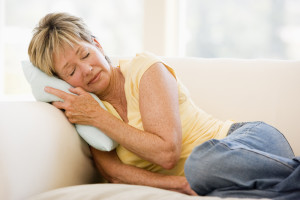The body operates on blood sugar, especially the brain. In other words, our brain needs sugar to work. Therefore, the body is very concerned about trying to control the level of blood sugar. If the blood sugar gets too high—greater than 200 mg/dl—a patient can begin spilling sugar into the urine, and simply not feel well. If it gets too low—less than 40 mg/dl—a patient can become confused, lethargic, have a seizure, and even go into a coma.
Insulin – Our Storage Hormone
Insulin is a hormone, which is produced in the beta cells of the pancreas. The beta cells of the pancreas release stored insulin (first phase release) and produces more insulin (second phase) if it is needed. Even the smallest rise in blood sugar following a meal stimulates the release of insulin from our pancreas. However, if our blood sugar rises rapidly, the amount of insulin that our pancreas releases is tremendous. Again, remember the body needs to control blood sugar in a very tight range. It is also known that the release of insulin is stimulated by protein in our diet but not by fat.
Insulin’s primary duty is to control this rising blood sugar by facilitating the transport of blood sugar from the blood stream into the cells that are responsive to insulin’s actions. These are primarily the muscle, liver, and fat cells. It is interesting to note that the brain does not need insulin to get the glucose it needs, since glucose readily passes into the brain on its own. Insulin attaches itself to specific receptor sites on the surface of the muscle, fat, and liver cells. Insulin then attracts glucose-transporting proteins (i.e. GLUT 4) which literally takes the glucose and transports it to the area of the cell where glucose is needed and used. In muscle, glucose may be used for glycogen production (stored as a quick source of sugar) or may be used directly for fuel. In the liver, insulin shuts down the liver’s production of sugar. In fat cells, insulin enhances the conversion of glucose into fat (lipogenesis). This becomes a very important fact when it comes to learning why you can’t lose weight. Especially when you realize another action of insulin is to shut down the breakdown of fat (lipolysis). In other words, these higher insulin levels create an environment that not only readily changes sugar to fat but it also holds on to that stored fat like a sponge holds on to water. Remember, the body thinks and lives on blood sugar and the level of sugar in our blood stream must be maintained in a very narrow range.
Glucagon – The Fat Releasing Hormone
There are always two sides to every regulatory system. The opposite of insulin is glucagon. Glucagon is produced and secreted from the alpha cells of the pancreas. Secretion of glucagon is stimulated by the intake of protein in our diet and suppressed by the intake of carbohydrates. Therefore, when we eat a lot of high-glycemic carbohydrates in a meal, insulin levels begin to rise very rapidly and glucagon levels are suppressed. If you eat a balance of protein and low-glycemic carbohydrates in a meal, insulin levels will drop and glucagon levels will rise, which allows these two hormones to remain in balance. Fat does not have a stimulatory affect on either insulin or glucagon.
The major affect of glucagon is on the liver where it stimulates the release of glucose. However, it also stimulates the release of fat (lipolysis) so that it can be used as fuel—it is your fat-releasinghormone. You will become familiar with the terms high-glycemic and low-glycemic carbohydrates. Remember, foods like white bread, white flour, rice, and potatoes are absorbed into our blood stream very rapidly and cause our blood sugar to spike faster than if we were slapping table sugar onto our tongue. These carbohydrates are referred to as high-glycemic. Foods like beans, legumes, apples, and cauliflower release their sugars very slowly and therefore are referred to as low-glycemic carbohydrates. We now need to look at what happens following a meal that is primarily made up of high-glycemic carbohydrates.
Events Following a High Glycemic Meal
Following the ingestion of a meal primarily made up of high-glycemic carbohydrates, our blood sugar begins to rise very rapidly. This rapid rise in blood sugar, as you have already learned, stimulates the release of a large amount of insulin and in turn significantly suppresses our glucagon level. The high levels of insulin now drive the sugar into the muscle, liver, and fat to be utilized, stored as glycogen, or stored as fat. It is important to realize that it does not take much glucose to completely fill up our glycogen stores in the liver and muscle. This means that almost all of the glucose following a meal is stored as fat. Insulin also causes the liver to quit making glucose, since our blood sugars are already too high, and causes the fat cells to quit breaking down fat (lipolysis). The blood sugar begins to fall almost as rapidly as it increased. In fact, it will usually fall well below the fasting blood sugar level into what is known as a hypoglycemic range (low blood sugar).
The body then panics because it must get the blood sugar up to protect against the consequences of very low blood sugars. Because of the rapid rise in blood sugar our body simply overproduced insulin and now has over shot its mark and the blood sugars have actually become too low. This triggers the release of what are known as counter-regulatory hormones. There is a release of glucagon, epinephrine (adrenaline), growth hormone, and cortisol. This is known as a counter-regulatory response and its primary purpose is to get the blood sugar back up to acceptable levels. These hormones stimulate the release of glucose by the liver and breakdown of fats from the adipose (fat) cells. However, even though the blood sugar eventually returns to normal and most of the time even higher; our body simply craves more and more food (hyperphagia). This entire cycle actually produces an “uncontrollable” hunger. This state of hyperphagia or desire to eat more food is actually very prolonged following an episode of hypoglycemia. Usually these people crave another high-glycemic meal and this vicious cycle starts all over again.
The rapid absorption of glucose following the consumption of a high-glycemic meal challenges the normal hormonal responses, complicating in effect, the body’s transition from a fasting state to a post-absorptive (post-meal) state. The resultant high insulin-to-glucagon ratio exaggerates the insulin action and significantly more glucose is stored as fat. If this is not bad enough, when these individuals then become hypoglycemic, their hunger is literally out of control and studies have shown that they eat 80% more calories during the rest of the day when compared to individuals who have eaten a normal, low-glycemic meal. This is the main reason that sugar and high-glycemic carbohydrates are so addictive, which I refer to as “The Carbohydrate Addiction”. Your body desires to control blood sugars and when they get too low (hypoglycemia), your brain sends out these counter-regulatory hormones, which slowly bring up the blood sugar. However, at the same time, these hormones create an overwhelming urge to eat more and more food (hyperphagia).
This is not a very pretty picture. Not only does eating the typical American diet cause us to store more fat but it also causes us to eat more and more calories than we should. You can easily imagine that you may feel good for 20 to 30 minutes as your blood sugar is peaking but it comes down again so quickly. Since our brain thinks on blood sugar, it is going to do everything it can to get you to eat more so you can raise this blood sugar again. This is the main reason so many people fail when they try to diet. The low-fat, high-carbohydrate diet will spike your blood sugar, which results in your blood sugars rising quickly and then falling rapidly into these hypoglycemic ranges. You are trying to eat less and less food to lower your caloric intake only to find that you have this tremendous craving for more and more food. You quickly become discouraged because you simply feel that your will power is not strong enough. In reality, you are just being set up for failure because of the body’s natural response to this type of diet.
Events Following a Low-Glycemic Meal
It is very important to compare what transpires when an individual eats a meal that consists of low-glycemic carbohydrates, instead of a high-glycemic meal. Again, this would be eating things like fresh fruits, vegetables, and whole grains along with some good protein and good fat. Well, the blood sugar rises slowly stimulating the release of insulin and glucagon in a much more normal physiological manner. Following a meal, 85% to 90% of the glucose is taken up by the muscle and the rest by the adipose (fat) cells and liver. Because the blood insulin levels do not rise too fast or too high, there is no abnormal storing of the fat. The insulin-to-glucagon ratio is in balance, so therefore, fat is still being broken down as much or more than is being made. The blood sugar slowly returns back to baseline (fasting blood sugar level) and does not drop into the hypoglycemic range. This does not set off the counter-regulatory hormonal response. Your appetite and hunger response is normal.
You are much more satisfied after a meal like this. You do not have the unusual cravings for high-glycemic foods and you actually do not even feel hungry for hours after a low-glycemic meal. Obviously, you are going to eat fewer calories naturally because your body is not craving food.
I help people overcome their limiting beliefs that are keeping them stuck, broke, and unhealthy to create balance, time freedom and healthy lives. You can find me at www.livinglifeholistic.com or via email at susano@livinglifeholistic.com



